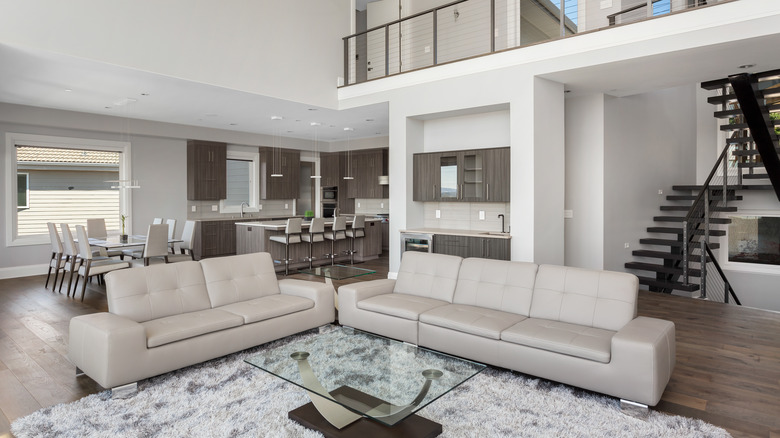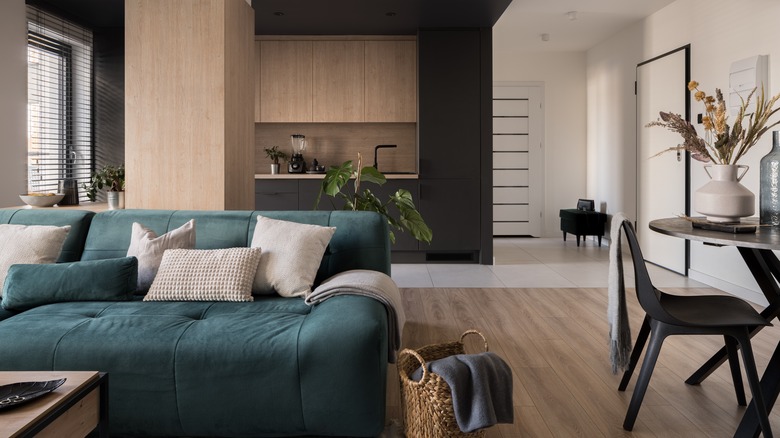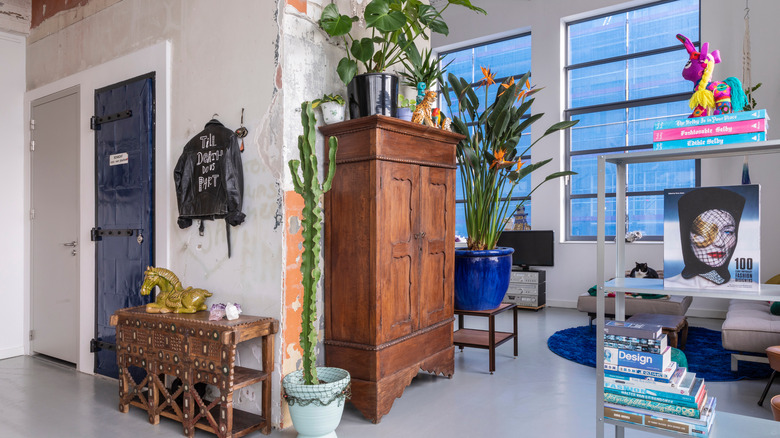Should Your Kitchen And Living Room Complement Each Other?
We'll start with a common sense appeal that might not be understood by everyone: There's no need to make every room in your home match. As The Beauty Revival points out, when everything in your home looks alike, it resembles a showroom in a furniture store. So don't match every style and color throughout your house. Instead, dig deeper into what you like best and add your favorites using layers, an important design principle to consider when mixing design styles (per W Design Collective).
The essential layer is the house's bones — the wall finishes, ceiling heights, molding, and more. These are the most permanent fixtures and the hardest to change. Whatever style you employ should serve as a constant throughout the house to maximize its harmony and flow. The next layer includes lighting and furniture — basics for sure, but easier to change. Start by following the style of your house, say traditional furniture in a colonial, but then mix in other design types you love – maybe some European chic or a bohemian vibe. The last layer is accessories. Since these are easy to swap out, change your rugs, artwork, pillows, and more whenever you want to refresh the space.
Connection and communication
Now that you're armed with basic design principles, should your kitchen and living room complement each other? Yes. Match? No. Clash? Absolutely not. Make your rooms talk to each other. If you have an open floorplan, the kitchen and living room have to complement each other since, essentially, they are the same room with no walls to separate color or décor. Mismatched moods or styles confined within the same space will make your interior chaotic and jarring. This principle also applies if you can see one room from the other.
Even if your living room and kitchen are separated by a hall or other rooms, connecting the spaces is still important, per HGTV. However, connecting the spaces isn't as easy as painting everything the same color. So instead, pick your base colors and your highlights. One way to work on your color palette is by following the 60/30/10 interior design rule, meaning the primary color should take up 60% of the room's visual space, a secondary color 30%, and a highlight color just 10%. This rule-of-thumb formula keeps the same colors flowing from room to room, although their roles and responsibilities will change. For example, blue may rule in the living room at 60% but then become muted in the kitchen at just 30%.
Your house, your rules
There's no such thing as the design police, so don't be afraid to mix colors and styles within your home to your heart's content. In fact, many homeowners find great success blending multiple decorating styles.
However, just as we choose a style and apply color, we also need to pay attention to scale, meaning the size of the furniture and accessories compared to the height and depth of the room, its windows, and doors. Also, be sure to factor in lighting, shapes, and finishes. For instance, if your kitchen is filled with mirror-bright surfaces in the backsplash and appliances, consider using something more muted in the living room, so the whole space doesn't feel like a giant disco ball. On the other hand, if you opt for glam and glimmer in the living room, your kitchen may serve up a hint of contrast through buffed but not shiny surfaces.
You can mix whatever styles you want; just be careful about too much mixing, as too many styles or colors will invariably create a visual jumble. Overall, a unified, planned approach results in appealing, harmonious rooms that comfort and nurture.


